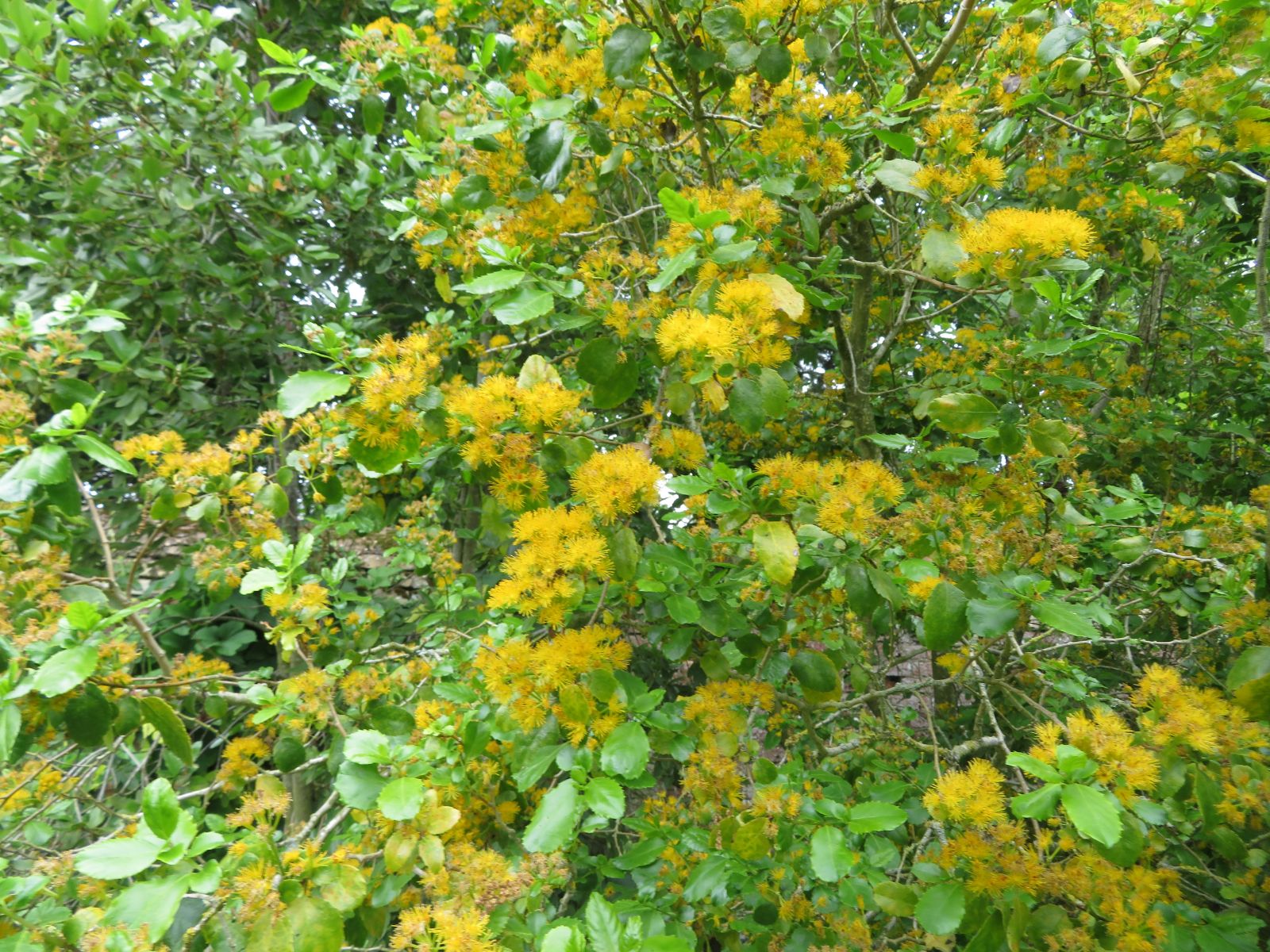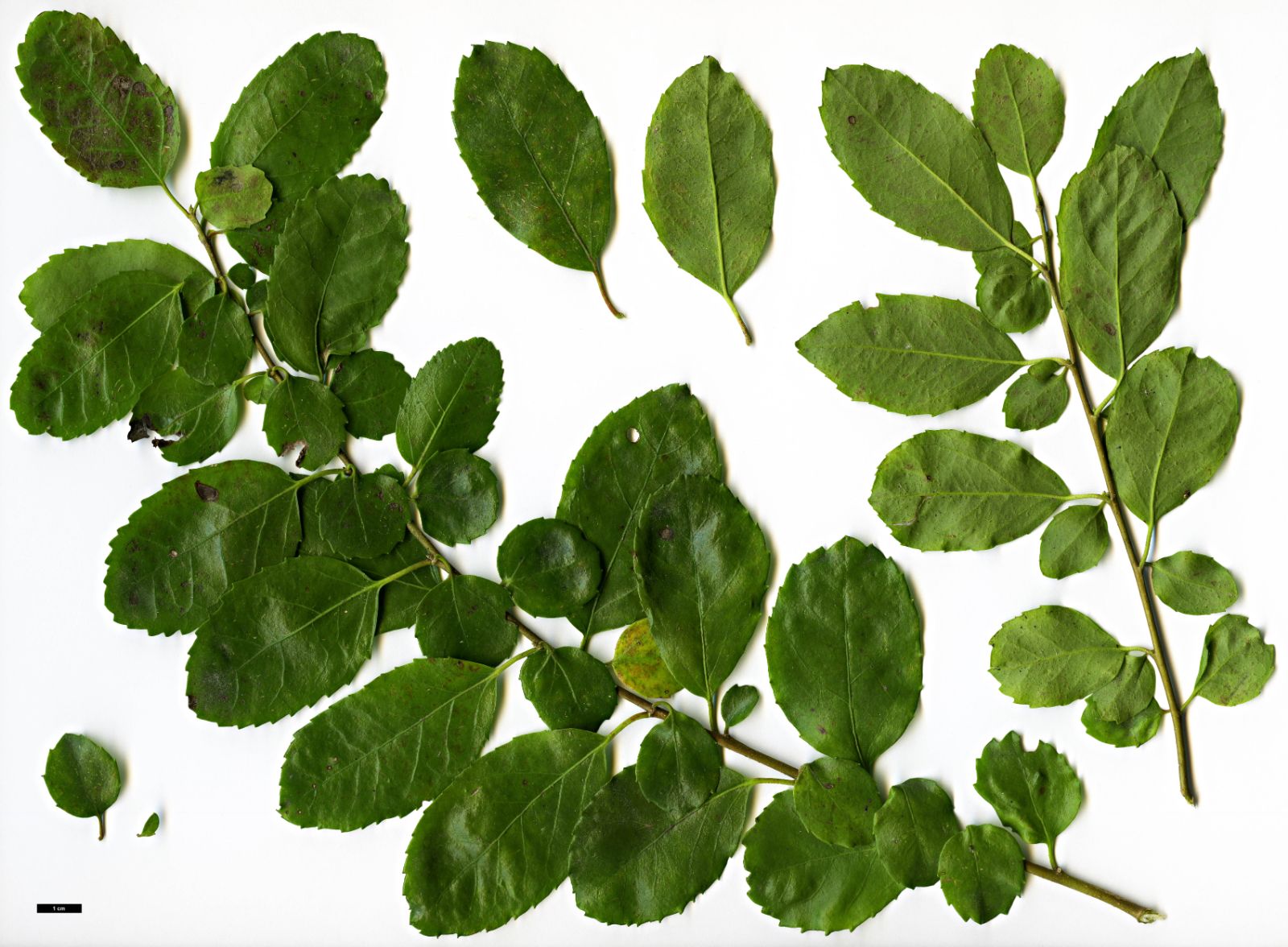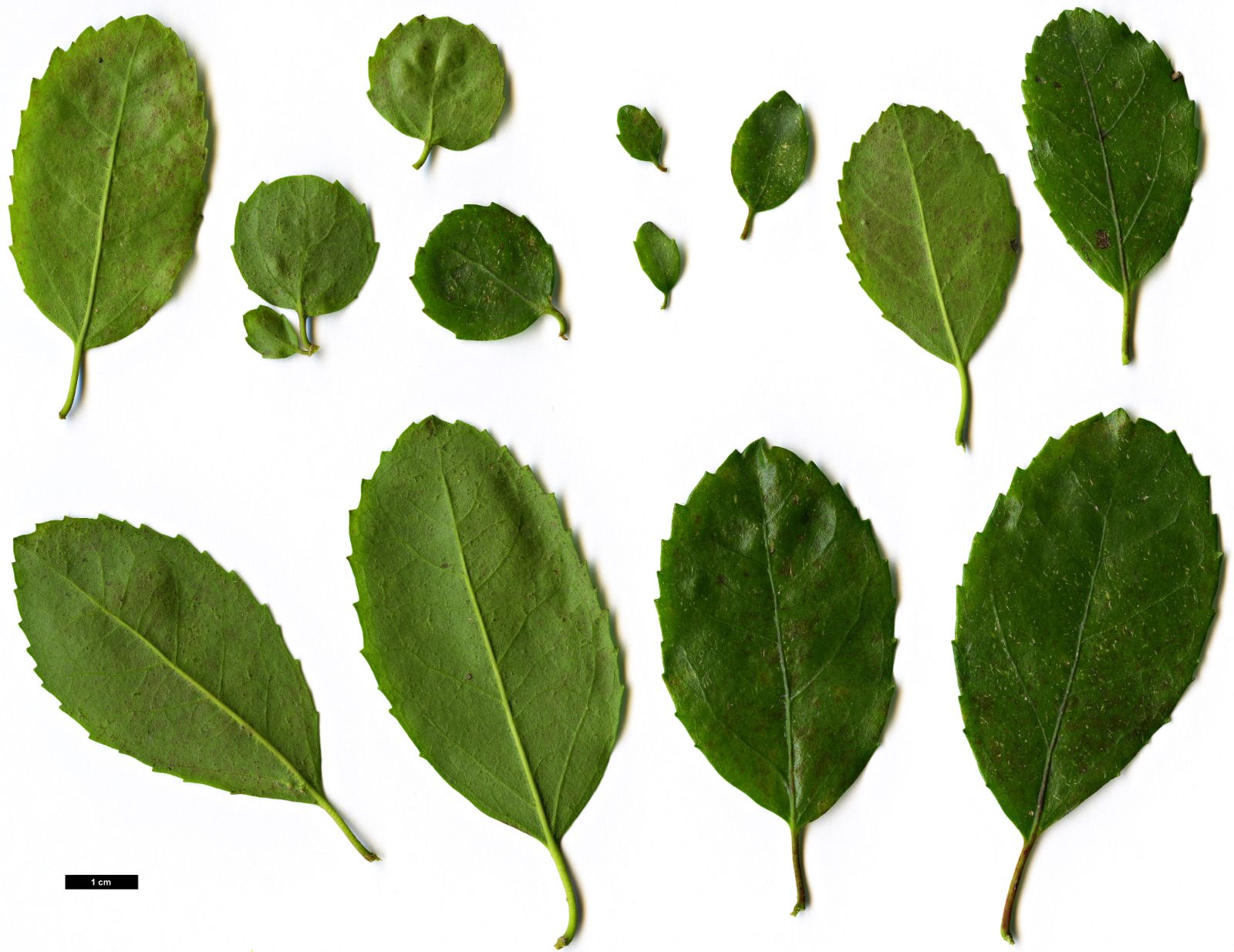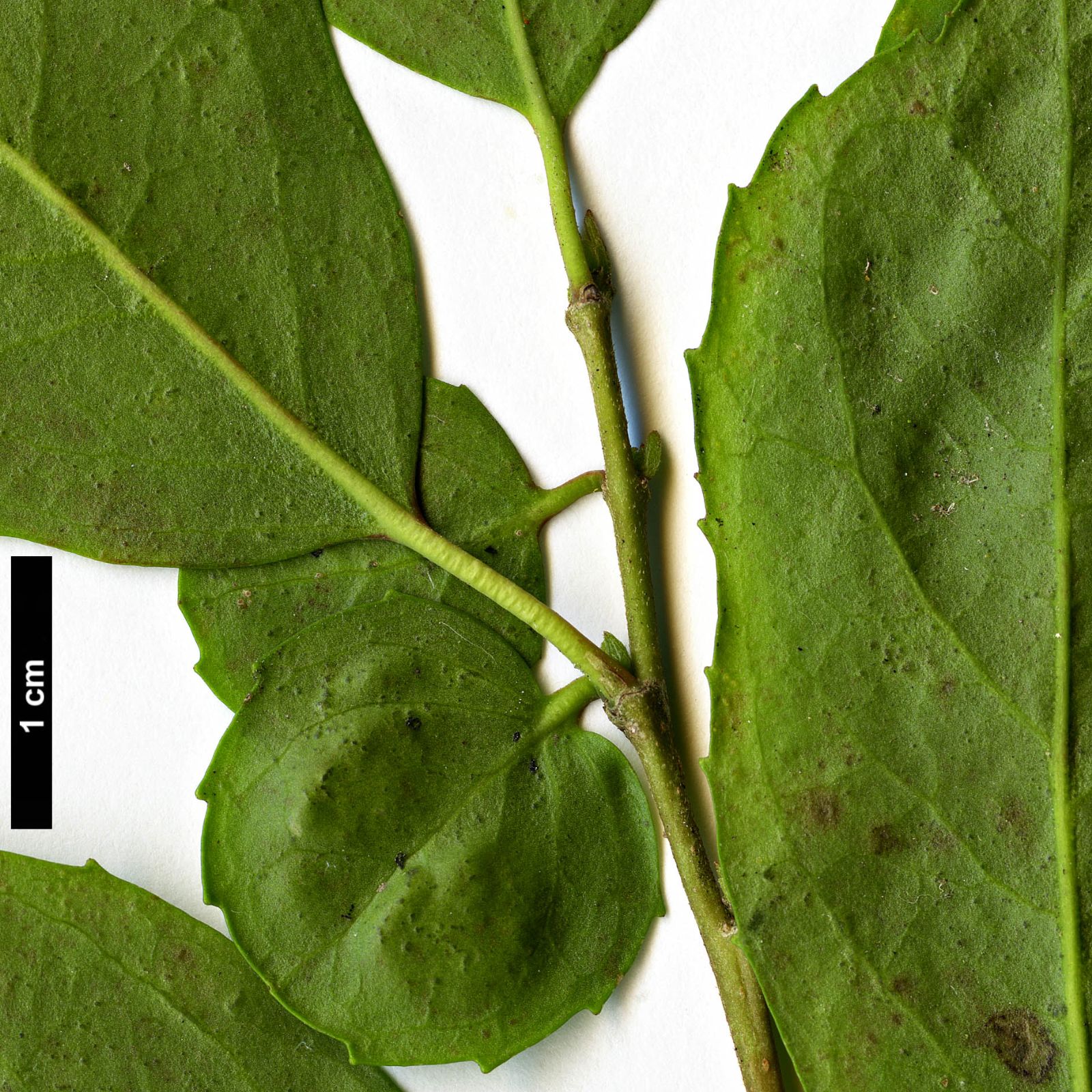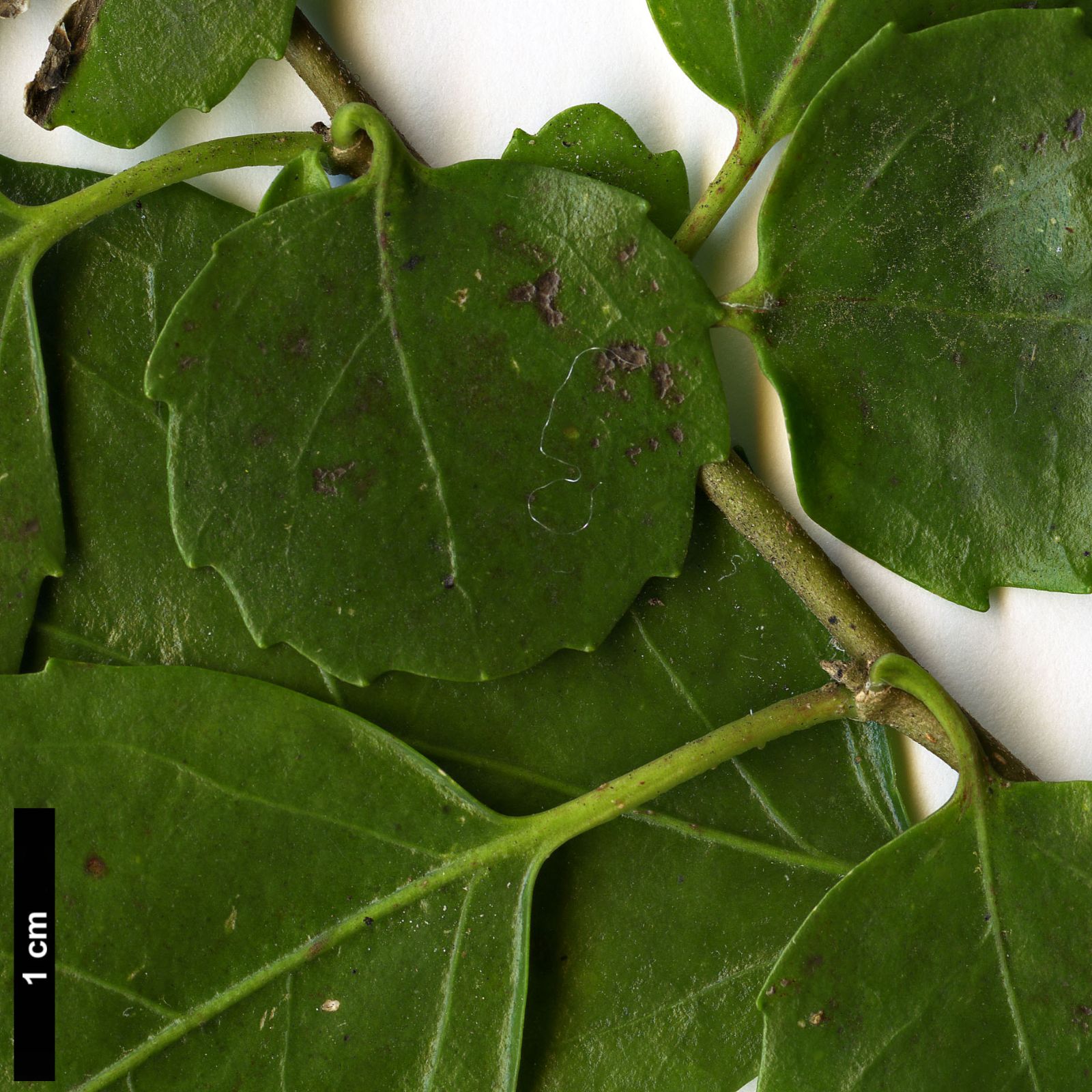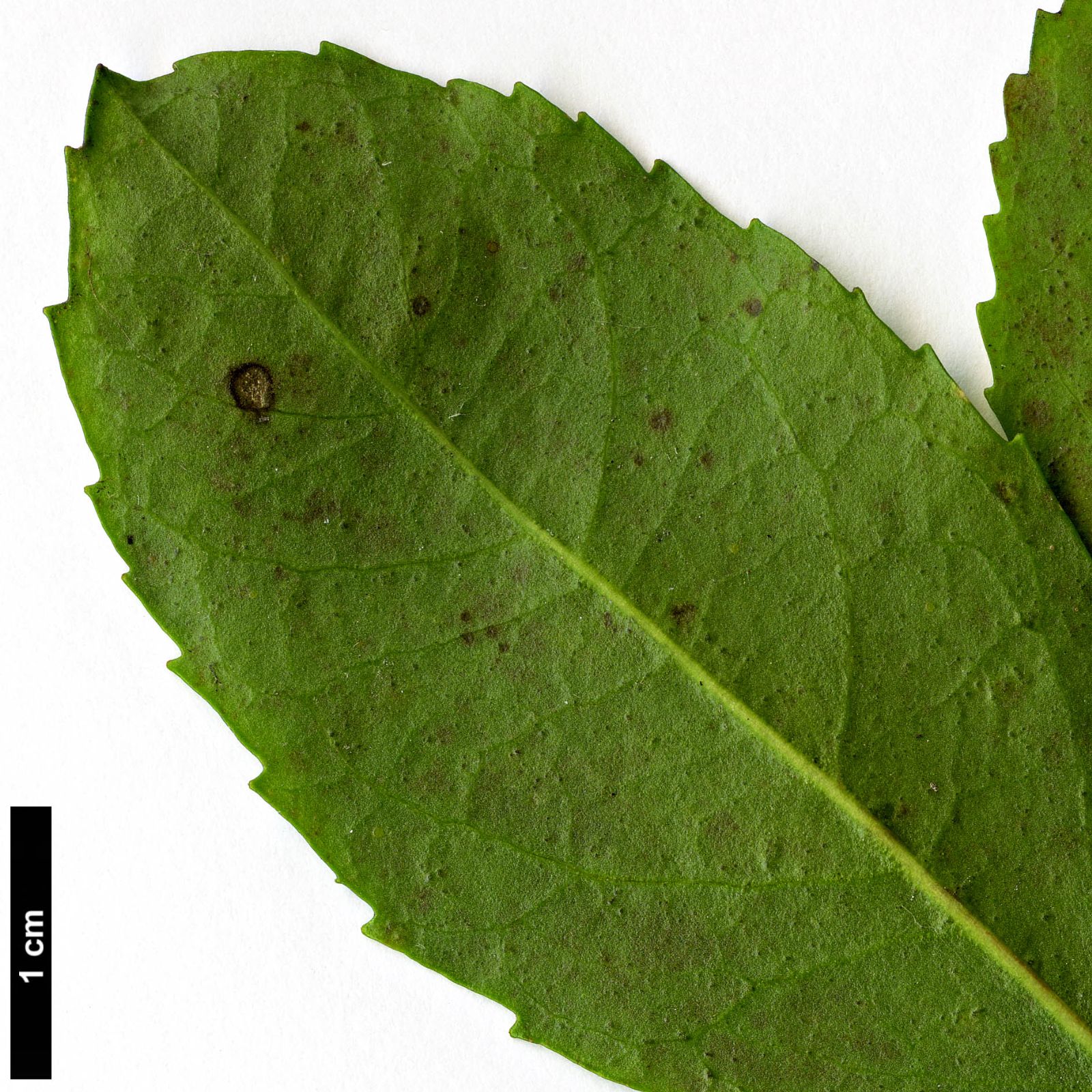Azara serrata
Credits
New article for Trees and Shrubs Online.
Recommended citation
'Azara serrata' from the website Trees and Shrubs Online (treesandshrubsonline.
Genus
Editorial Note
W.J. Bean discussed this species in a footnote to his article on Azara dentata. We have separated his comments here onto a standalone page, pending a full revision of this genus.
TC, December 2023.
This species, also a native of Chile, has been confused with [Azara dentata]. The true plant has downy branchlets like A. dentata, but the leaves are larger, not felted beneath, often nearly glabrous. The inflorescence too is very distinct, the flowers being arranged in a globose umbel borne at the end of a slender, downy stalk, up to 1{1/2} in. long.
From the Supplement (Vol. V)
A. serrata – For a note on this species by A. J. Anderson, see The Garden (Journ. R.H.S.), Vol. 102, pp. 37–8 (1977). At that time it had been growing for eight or nine years in a south-facing border in Anderson’s garden at Englefield Green, Surrey. He remarks that precautionary cuttings, if not needed, make excellent pot-plants.

